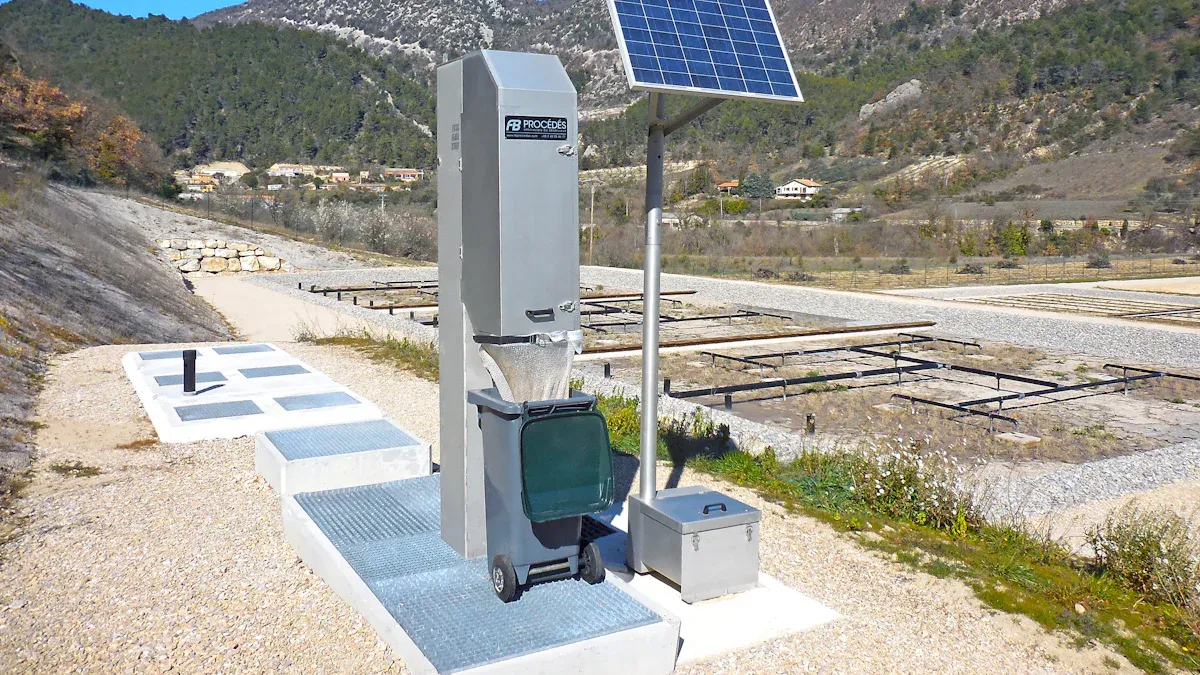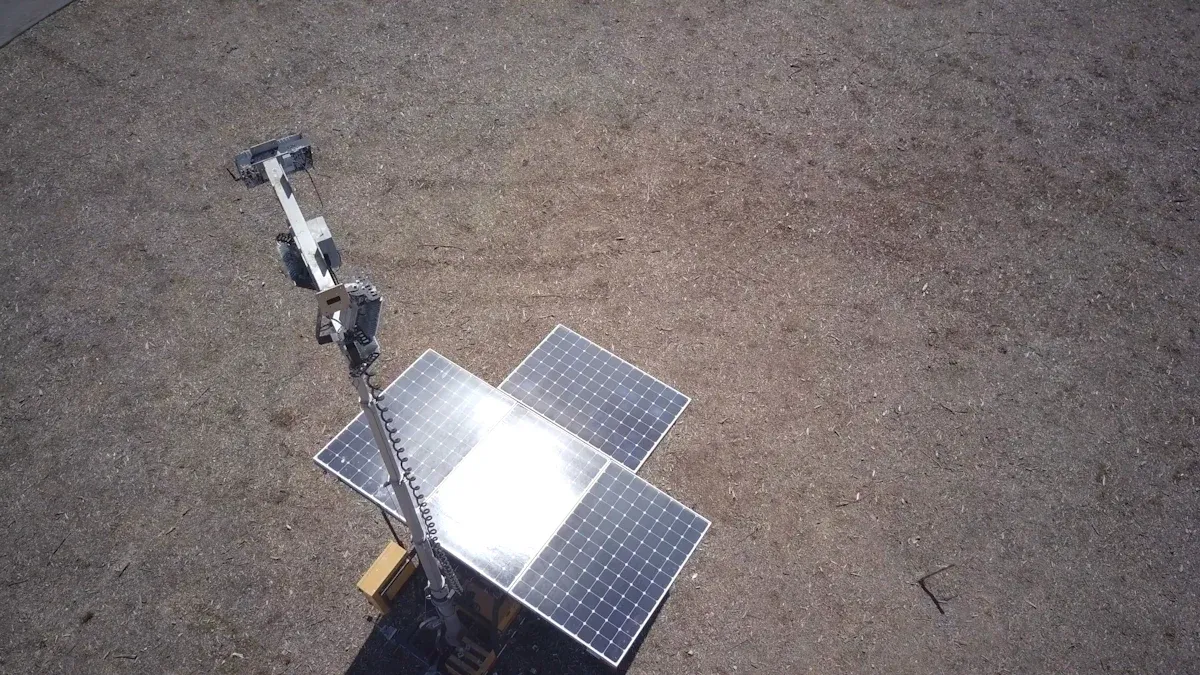Views: 0 Author: Site Editor Publish Time: 2025-07-16 Origin: Site








Electric linear actuators are very important in solar tracker systems. They help move solar panels exactly where they need to go. This makes the system work better and more reliably. These devices can help make over 25% more power than fixed systems. This is especially true when the sky is clear. Their simple design lets them work in tough weather. They can be used in many different places. Using electric linear actuators helps your solar tracker get the most sunlight every day.
Electric linear actuators help solar panels move with the sun. This can make energy output go up by as much as 25%. These actuators work in any weather and do not need much care. This makes solar trackers strong and last a long time. Smart controls and sensors help actuators move panels to the best spot for sunlight all day. Using actuators means you need fewer solar panels for the same power. This saves money and space. Electric linear actuators only use power when moving. They also help lower harm to the environment.

A solar tracker system helps you get more energy from the sun. It uses special solar panel technology to move your panels. The panels always face the sun. This helps you collect more sunlight each day. There are two main types of solar tracking systems. Single-axis trackers turn panels from east to west. Dual-axis trackers move panels up and down and also side to side.
A solar tracker can help you make 25-35% more power than fixed systems. Dual-axis trackers can give you 5-10% more on top of that. These systems use smart controls to keep panels at the best angle. They work well in bad weather, like strong winds or clouds.
Here is how solar tracking systems help your solar panels:
Single-axis trackers turn panels along one line, following the sun’s path.
Dual-axis trackers move panels on two lines, for daily and seasonal sun changes.
Motors or actuators move the panels smoothly and in the right way.
Checking and fixing the system often keeps it working well.
Movement is very important for getting the most energy from your solar panels. When panels move to follow the sun, they stay almost straight to the sunlight all day. This helps you get more energy, even in the morning and evening when the sun is low. Fixed panels do not get this extra energy because they only face one way.
Solar tracking systems help you get up to 30% more sunlight than fixed panels.
Dual-axis trackers make even more energy by moving for both daily and seasonal sun changes.
Keeping your panels at the best angle helps you make more energy and waste less sunlight.
A solar tracker lets you use fewer panels to get the same power. This makes your system work better and saves money.

Electric linear actuators help move solar panels smoothly and exactly. They change electrical energy into straight movement. This movement lets you tilt or turn your solar panels. The panels can always face the sun. The actuator has a motor that spins a screw. The screw moves a nut back and forth. This pushes or pulls the panel into place.
You can find different electric linear actuators in solar tracking units. Some, like the Insolis, are made for solar photovoltaic systems. They can lift heavy panels and move them very precisely. Others, like the Junior, work in many fields, including solar tracking. Here is a table to show the main types:
| Actuator Type | Application in Solar Tracking | Operational Characteristics |
|---|---|---|
| Insolis | Made for solar photovoltaic systems; used in complex solar tracking with elevation and azimuth movements | Handles heavy loads up to 15,000 N; gives precise straight movement for best sun exposure |
| Junior | General type for many industries, including solar tracking | Can be set up for different uses |
Smart systems control these actuators. Sensors or GPS tell the actuator where the sun is. The actuator moves the solar panel to the best angle. This happens all day, so your panels get the most sunlight.
You want your solar tracker to be very accurate. Electric linear actuators help you do this job. They let you change both the tilt and azimuth angles of your panels. This means your panels can follow the sun’s path and adjust for seasons.
Using electric linear actuators helps your solar panels work their best. The actuators move fast and smooth, so your panels stay in the right spot.
Advanced solar trackers use sensors and smart software. For example, the system might use Python code and special libraries to find the sun’s exact spot. The actuator then moves the panel to match this spot. This control helps your solar panels make more energy.
You also get other good things:
Electric linear actuators only use power when moving, so they save energy.
They work well in bad weather and need little fixing.
They fit both single-axis and dual-axis trackers, so you can use them in many solar tracker systems.
Here are some ways electric linear actuators help your solar panels:
They keep your panels facing the sun all day, so you get up to 25% more electricity than fixed panels.
They lower mistakes and keep your panels steady, even in strong winds.
They help your solar tracker last longer and work better with less stopping.
You can trust electric linear actuators to give you steady, efficient, and exact control. This means your solar panels will always work great, no matter where you put them.
Solar tracking actuators help your panels face the sun all day. This helps you get more power, even in the morning and evening. You can see how much more energy you get with solar tracking actuators in the table below:
| Condition | Energy Output Increase (%) | Notes |
|---|---|---|
| Overall average | 22–23% | Solar tracking panels make more energy than fixed panels each day. |
| Morning hours | 29–33% | You get more energy in the morning because of the sun’s angle. |
| Evening hours | Over 100% | In the evening, you can make more than twice as much energy. |
| Midday hours | ~4% | At midday, there is only a small increase because fixed panels already work well. |
Solar tracking actuators help most when the sun is low. Some systems can give you even bigger gains.
Solar tracking actuators work well in all kinds of weather. They keep working in rain, snow, wind, and heat. Here are some reasons why they are so strong:
Solar tracking actuators are built to last in tough places like dust, acid rain, and strong sunlight.
They only use power when moving, so they save energy.
Safety features move your panels to a safe spot during storms.
You do not have to fix them often, so you save time and money.
Your solar tracker keeps working well because these actuators need little care.
You can use solar tracking actuators in many places and systems. They fit single-axis, dual-axis, and heliostat trackers. You can set them up in different ways for your needs. Here is how they help you:
Solar tracking actuators work in both small and big solar farms.
They connect with smart control systems to work better.
You can use them where there is strong wind, heavy rain, or high heat.
These things make solar tracking actuators a good choice if you want your solar tracker to work better and save energy.
Electric linear actuators can make your solar tracker system smarter. These actuators use feedback sensors to show where your solar panels are. Some actuators have potentiometers or Hall effect sensors inside. These sensors help you check if your panels face the sun. You can look at your system from far away on a computer or phone. This is called remote monitoring.
| Feedback Sensor Type | Description | Key Features | Application in Solar Tracking |
|---|---|---|---|
| Hall Effect Sensors | Use magnets to make digital signals. | High resolution, long life, good for exact control. | Best for tracking and syncing panels. |
| Potentiometers | Use resistance to show where things are. | Simple, reliable, gives analog feedback. | Most common for checking panel position. |
| Reed Sensors | Use magnets to open or close a switch. | Simple, reliable, basic position check. | Used for simple feedback needs. |
| Optical Sensors | Use light to sense where things are. | Very precise, but can get dirty easily. | Used in advanced tracking systems. |
Smart actuators have safety features too. For example, diodes stop the actuator if it moves too far. This keeps your panels safe and working right. You can get alerts if something is wrong. This helps you fix problems fast and keep your system working.
Using automation and smart control helps the environment. Electric linear actuators only use power when they move. This saves energy and lowers your bills. They last a long time and work in bad weather, so you do not need much fixing. You do not need oil or fluids, so there is less chance of leaks.
Smart solar tracking systems let you use fewer panels for the same power. This means you use less land and fewer materials.
You can also lower your carbon footprint. Automated systems keep your panels facing the sun, so you get the most energy. This helps clean energy goals and makes solar farms better for the planet. By picking electric linear actuators, you help make a greener future.
You can make your solar panels work better with electric linear actuators. These actuators help you control your panels very well. They work in all kinds of weather and are very reliable.
They use less power than other types and do not need much fixing. This helps your system last longer.
You can program them to do different jobs, so your solar tracker works even better.
When you use electric linear actuators, you get more energy and save more money.
An electric linear actuator helps move your solar panels. It lets the panels follow the sun as it moves. This way, your panels get more sunlight. You can make more energy every day.
Most electric linear actuators last for a long time. They are made from strong parts and do not break easily. Many can work well for more than 10 years in solar tracker systems.
Yes, you can use them in all kinds of weather. They work in rain, snow, wind, and heat. Their design keeps them safe outside, even when the weather is tough.
You do not need special tools to put one in. You can use simple hand tools like wrenches and screwdrivers. Always read and follow the instructions from the company that made your actuator.
